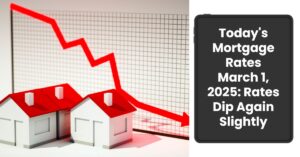Florida, the Sunshine State, attracts millions of tourists and new residents annually with its beautiful beaches, warm climate, and diverse culture. However, like any other state, Florida has its share of crime. This report is about the top 50 most dangerous cities in Florida, according to the latest crime statistics, to shed light on public safety concerns.
Using the crime index value calculated by USA.com, which considers both violent and property crimes, we can understand the relative safety of different cities. Remember, a higher crime index value signifies a higher crime rate.
While this data provides valuable insights, it's crucial to remember that statistics don't tell the whole story. Factors like poverty, unemployment, and lack of resources can contribute to crime rates, and it's important to approach this information with nuance and understanding.
🚨 Top 50 Most Dangerous Cities in Florida
The following ten cities are ranked as the most dangerous in Florida based on the crime index:
1. Mangonia Park, FL (Crime Index: 14,056)
A small town located in Palm Beach County, Mangonia Park tops the list with an incredibly high crime index. Residents report concerns about high rates of violent crime, drug activity, and property theft.
2. Medley, FL (Crime Index: 12,200)
Situated in Miami-Dade County, Medley is a small city with a significant crime problem. The city faces challenges related to property crime, drug offenses, and gang activity.
3. Opa Locka, FL (Crime Index: 7,485)
A city located in Miami-Dade County, Opa Locka is known for its history and unique culture. However, it also struggles with high crime rates, particularly involving violent offenses, drug trafficking, and property crime.
4. Florida City, FL (Crime Index: 7,322)
Located in Miami-Dade County, Florida City is a small community with a higher than average crime rate. Residents report concerns about theft, burglary, and violent crime.
5. Cocoa, FL (Crime Index: 6,011)
Cocoa, located in Brevard County, is a city with a diverse population and a significant crime problem. The city faces challenges related to drug trafficking, property crime, and violent crime.
6. Belle Glade, FL (Crime Index: 5,225)
Belle Glade is a city in Palm Beach County with a high crime index. The city faces challenges with poverty, unemployment, and a high concentration of drug-related crime.
7. Eatonville, FL (Crime Index: 5,034)
Eatonville, located in Orange County, is a historic city with a small population. However, it faces a high crime rate, particularly with property crime and violent offenses.
8. Riviera Beach, FL (Crime Index: 4,698)
Located in Palm Beach County, Riviera Beach is a city with a significant crime problem. The city faces challenges related to poverty, unemployment, and high rates of violent crime, drug trafficking, and property crime.
9. Miami Beach, FL (Crime Index: 4,614)
A popular tourist destination in Miami-Dade County, Miami Beach also has a high crime index. The city faces challenges related to theft, burglary, and violent crime, especially during peak tourist seasons.
10. Madison, FL (Crime Index: 4,607)
Located in Madison County, Madison is a small city with a high crime rate. The city faces challenges related to property crime and drug offenses.
50 Most Dangerous Cities in Florida: A Complete List
The following list provides the full ranking of the top 50 most dangerous cities in Florida, based on the crime index:
| Rank | Crime Index | City / Population | County |
|---|---|---|---|
| 1 | 14,056 | Mangonia Park, FL / 1,758 | Palm Beach |
| 2 | 12,200 | Medley, FL / 940 | Miami-Dade |
| 3 | 7,485 | Opa Locka, FL / 15,867 | Miami-Dade |
| 4 | 7,322 | Florida City, FL / 11,853 | Miami-Dade |
| 5 | 6,011 | Cocoa, FL / 17,261 | Brevard |
| 6 | 5,225 | Belle Glade, FL / 17,785 | Palm Beach |
| 7 | 5,034 | Eatonville, FL / 2,258 | Orange |
| 8 | 4,698 | Riviera Beach, FL / 33,123 | Palm Beach |
| 9 | 4,614 | Miami Beach, FL / 90,669 | Miami-Dade |
| 10 | 4,607 | Madison, FL / 2,976 | Madison |
| 11 | 4,537 | Bunnell, FL / 2,715 | Flagler |
| 12 | 4,520 | Lake Park, FL / 8,317 | Palm Beach |
| 13 | 4,501 | Lake City, FL / 12,059 | Columbia |
| 14 | 4,414 | Orlando, FL / 250,224 | Orange |
| 15 | 4,387 | Fort Pierce, FL / 42,744 | St. Lucie |
| 16 | 4,383 | Lake Worth, FL / 35,903 | Palm Beach |
| 17 | 4,373 | Daytona Beach, FL / 61,913 | Volusia |
| 18 | 4,356 | Palatka, FL / 10,464 | Putnam |
| 19 | 4,332 | Chiefland, FL / 2,301 | Levy |
| 20 | 4,294 | Mulberry, FL / 3,864 | Polk |
| 21 | 4,073 | Pembroke Park, FL / 6,220 | Broward |
| 22 | 4,006 | Homestead, FL / 63,459 | Miami-Dade |
| 23 | 3,758 | Port Richey, FL / 2,685 | Pasco |
| 24 | 3,727 | Perry, FL / 7,040 | Taylor |
| 25 | 3,723 | Panama City Beach, FL / 11,884 | Bay |
| 26 | 3,696 | Crystal River, FL / 3,072 | Citrus |
| 27 | 3,686 | North Miami, FL / 60,756 | Miami-Dade |
| 28 | 3,676 | Saint Petersburg, FL / 248,429 | Pinellas |
| 29 | 3,652 | Palmetto, FL / 12,856 | Manatee |
| 30 | 3,636 | Miami Gardens, FL / 110,867 | Miami-Dade |
| 31 | 3,610 | Miami, FL / 416,432 | Miami-Dade |
| 32 | 3,477 | Fort Myers, FL / 66,167 | Lee |
| 33 | 3,475 | Key West, FL / 25,187 | Monroe |
| 34 | 3,458 | West Palm Beach, FL / 102,283 | Palm Beach |
| 35 | 3,452 | Quincy, FL / 8,022 | Gadsden |
| 36 | 3,379 | Lauderdale Lakes, FL / 33,710 | Broward |
| 37 | 3,377 | Sarasota, FL / 52,986 | Sarasota |
| 38 | 3,339 | Leesburg, FL / 20,915 | Lake |
| 39 | 3,314 | Dundee, FL / 3,833 | Polk |
| 40 | 3,301 | Cocoa Beach, FL / 11,287 | Brevard |
| 41 | 3,286 | Orange City, FL / 10,968 | Volusia |
| 42 | 3,276 | De Funiak Springs, FL / 5,410 | Walton |
| 43 | 3,260 | Fort Lauderdale, FL / 171,137 | Broward |
| 44 | 3,255 | Panama City, FL / 36,405 | Bay |
| 45 | 3,251 | Ocala, FL / 56,918 | Marion |
| 46 | 3,247 | Oakland Park, FL / 42,795 | Broward |
| 47 | 3,239 | South Miami, FL / 12,036 | Miami-Dade |
| 48 | 3,237 | Pompano Beach, FL / 103,234 | Broward |
| 49 | 3,231 | North Miami Beach, FL / 43,028 | Miami-Dade |
| 50 | 3,229 | Sanford, FL / 55,296 | Seminole |
Understanding the Factors Contributing to Crime Rates
While the crime index provides valuable insights, it is crucial to understand the underlying factors contributing to these statistics. Several key elements play a significant role in shaping crime rates in Florida cities, including:
1. Poverty and Inequality:
Areas with high poverty rates often experience higher crime rates. This correlation is rooted in several factors, including limited access to education, job opportunities, and essential resources.
2. Unemployment and Lack of Economic Opportunities:
A lack of employment opportunities can lead individuals to engage in criminal activities as a means of survival or a perceived path to financial gain.
3. Drug Abuse and Trafficking:
The presence of drug abuse and trafficking can significantly impact crime rates. These activities often fuel violence, theft, and other criminal offenses.
4. Gang Activity:
Gang violence and organized crime can contribute to high crime rates in certain areas. The presence of gangs can create a climate of fear and intimidation, hindering community safety.
5. Lack of Social Services:
Limited access to social services, such as mental health care, substance abuse treatment, and job training programs, can exacerbate existing problems and contribute to criminal activity.
6. Urban Sprawl and Lack of Public Safety Measures:
Rapid urbanization and development can lead to overcrowded areas, inadequate infrastructure, and limited resources for law enforcement, which can contribute to higher crime rates.
Community Efforts to Combat Crime
Numerous organizations and communities in Florida are working tirelessly to address crime and improve public safety. Some crucial efforts include:
1. Community Policing:
Building trust between law enforcement and the community is paramount to combatting crime. Community policing programs focus on fostering positive relationships and collaboration to address crime issues proactively.
2. Youth Programs and Education:
Investing in youth programs and education is crucial to preventing future crime. Programs that provide opportunities for young people, such as mentorship, after-school activities, and vocational training, can help steer them away from criminal activity.
3. Economic Development Initiatives:
Creating job opportunities and fostering economic development can be effective in reducing crime. Providing pathways to employment and improving economic conditions can decrease the factors driving individuals to criminal activity.
4. Social Services and Support Networks:
Expanding access to social services, such as mental health care, substance abuse treatment, and housing support, can address underlying issues contributing to crime.
5. Crime Prevention Programs:
Community-based crime prevention programs, such as neighborhood watch groups, street lighting initiatives, and security cameras, can help deter crime and create safer environments.
The Role of Law Enforcement
Law enforcement agencies play a critical role in maintaining public safety and combating crime. Effective law enforcement strategies involve:
1. Proactive Policing:
Proactive policing focuses on addressing potential crime issues before they occur. This involves deploying resources to high-crime areas, conducting targeted investigations, and implementing crime prevention initiatives.
2. Community Engagement:
Engaging with the community is essential for law enforcement to build trust and gather intelligence. This can involve community meetings, neighborhood forums, and initiatives to foster positive relationships with residents.
3. Data-Driven Approaches:
Utilizing crime data and analytics to identify crime patterns, hotspots, and potential risk factors can help law enforcement allocate resources effectively and tailor strategies to specific areas.
4. Collaborative Partnerships:
Building partnerships with other agencies, community organizations, and social service providers can enhance law enforcement efforts and address crime issues holistically.
Conclusion: A Path Towards Safer Communities
Florida is a beautiful and diverse state with a lot to offer, but its challenge with crime requires attention and collaboration. By understanding the factors contributing to crime rates, fostering community initiatives, and supporting law enforcement efforts, Florida can work towards building safer communities for everyone.
This comprehensive guide provides a starting point for learning about the issue of crime in Florida. By staying informed and engaging in constructive dialogue, we can contribute to building a safer and more prosperous state for generations to come.
FAQs
1. What are the safest cities in Florida?
While this article focuses on the most dangerous cities, several Florida cities have low crime rates. Based on crime index data, cities like Indian River Shores, Highland Beach, Jupiter Inlet Colony, South Palm Beach, Sewall's Point, and Windermere tend to have the lowest crime rates. To find specific safe cities, you can search for crime statistics based on specific criteria like population size, demographics, or specific crime types.
2. What is the best way to stay safe in Florida?
Staying safe in Florida involves being aware of your surroundings, taking precautions, and being proactive. It's crucial to avoid high-crime areas, be mindful of your personal belongings, and trust your instincts if you feel unsafe.
3. How can I contribute to making my community safer?
There are many ways to contribute to making your community safer. Participate in neighborhood watch programs, report suspicious activity, support local community initiatives, and engage in constructive dialogue with law enforcement.
4. Are there any resources available to help crime victims?
Yes, there are numerous resources available for crime victims in Florida. The Florida Department of Law Enforcement (FDLE) offers victim services, including counseling, legal assistance, and financial aid. You can reach out to them for support and guidance.
5. Is crime increasing in Florida?
The trend of crime in Florida varies by region and year. It's crucial to refer to the latest crime data to determine the current trends and areas of concern.




